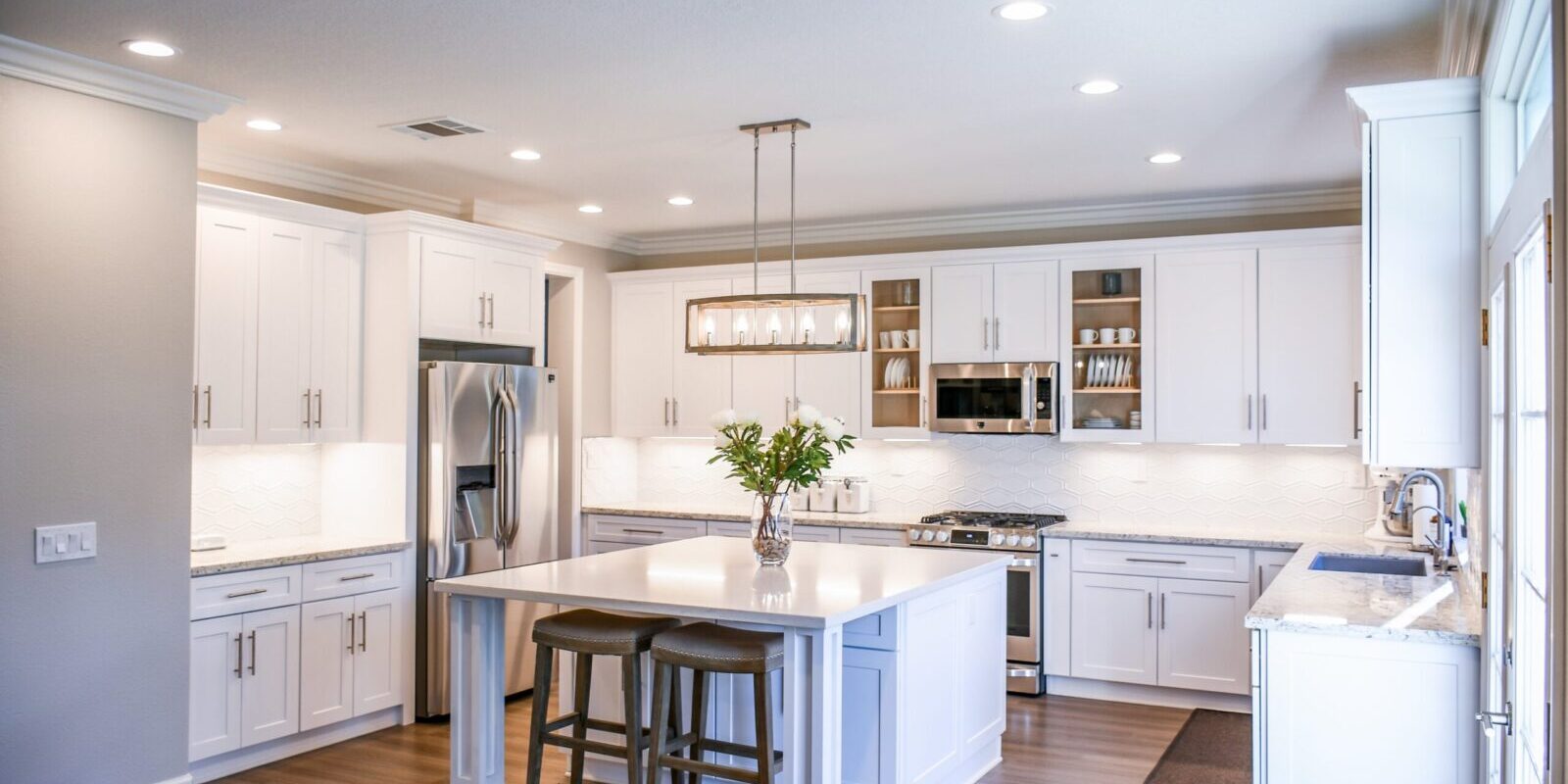Kitchen cabinets are exposed to high humidity and temperature, so they can crack easily. Why are my kitchen cabinets cracking? Cracks may occur in any panel of the cabinet, but the most common areas for cracking are around doors or near hinges, at corners, or where panels overlap.
There are many reasons why kitchen cabinets crack, such as:
- Presence of liquids on the surface of the cabinets.
- Transportation stress.
- Improper installation.
- Presence of liquids on the surface of the cabinet: Once a liquid has been spilled onto a kitchen cabinet, it should be cleaned as soon as possible to prevent damage from occurring. If water is left to sit on wood, it can cause damage in a short amount of time or totally ruin the cabinet. The longer water is in contact with wood, the greater chance it has to warp, twist and crack.
- Transportation stress: When cabinets are delivered from the manufacturer they will most likely be tightly packed together with other items on a skid or pallet. When this happens there is a possibility that the weight of the materials on top of and around them can cause large pressure ridges in all surfaces.
Many times these ridges will appear to be cracked, but they are caused by the pressure applied from the wood getting indented or pushed down into itself. These types of ridges can often be repaired, but it will depend on the severity of the case. When cabinets are sent to a warehouse or retail store for display, it is common for them to also be tightly packaged together.
This makes them susceptible to warped panels and misalignment of doors and drawers from being pushed too hard during shipping. The only way to prevent this from happening is to use a lot of Styrofoam or other soft material between cabinets during transportation.
- Improper installation: Kitchen cabinets are precision pieces of furniture that are joined together by hidden means, whether they are butt joints, dowels, mortise and tenon joints, dadoes, or rabbets.
If cabinets are not assembled and installed correctly, the strength of the joints will be compromised and they can develop cracks that run across or along the joints themselves. Cracks in joinery areas will most likely require complete replacement of the piece to fix properly.
There is more than one way you can solve these problems. You need to inspect the cabinets and determine the true cause of cracking for your particular case.
Inspecting Kitchen Cabinet Cracks
In order to diagnose where cracks are coming from, it’s important to know what type of joint is being used in the construction of a cabinet. This will help identify where the problem lays and what can be done to fix it.
Butt Joint: This type of joint is used when the wood edges that are being joined together are equal in thickness. The two pieces simply butt up against each other and no frame or reinforcement is required. Butt joints tend to show cracks because the edge of one piece bows or twists away from the other.
Mortise and Tenon Joint: This type of joint is strong because the mortise holds the tenon tightly in place by inserting into a hole that’s been drilled out. Cracks will appear at either end of the tenon or across both pieces where they meet if a mortise and tenon joint is broken.
Dado Joint: Sheathing that’s thicker than the width of the dado joint is what allows it to have some flex. A crack will appear on one side or both of a protruding piece if there is stress being placed on the cabinet because the edge of one piece of wood bows away from another.
Rabbet Joint: A rabbet joint consists of two things; one piece has a small edge that is cut away and it’s inserted into the other. When this type of joint is loose or broken, cracks will appear as an arc if the larger piece bows out or as a straight line if the smaller piece bows out.
A rabbet joint is most often found on drawer boxes.
The general rule of thumb is the wider the piece of wood, the more susceptible it will be to developing a crack from warping or twisting due to being exposed to water for long periods of time.
If your cabinets have been installed for a long period of time and are showing signs of bowing, twisting, or warping, it’s recommended that you have them replaced. It is possible for these types of problems to develop due to improper installation or poor construction.
Cabinet cracks are most often caused by three factors: water damage, moving the cabinets after they’ve been installed, and exposure to extreme temperatures.
- Water Damage: In order to determine if water damage is causing your cracking, you will have to inspect the joints in the areas where they are showing signs of breaking down. If one side of a butt joint bows away from another or starts to peel up at the corners, it’s likely that water is to blame. kitchen cabinets cracking
If you’ve had water damage in your kitchen, it’s not something that can be fixed simply by tightening joints or adding glue. The best way to fix water damage is to remove the cabinets and replace them with new ones.
- Moving Cabinets: If you’ve moved your cabinets and they’ve developed cracks, it’s likely that the joints were not secure enough to hold the weight of the cabinets or there was too much stress placed on them. This can be fixed by readjusting the hinges and carefully re-aligning the shelves and drawers. kitchen cabinets cracking
- Exposure to Extreme Temperatures: If the cracking you’re seeing is across the front of the cabinets, this could be due to low humidity. Extreme changes in temperature can cause wood to shrink and expand which causes it to crack.
I hope you surely get all the answer about why are my kitchen cabinets cracking? Though, Cabinet repairs that are made by gluing pieces of wood together with glue will not last long because continuous movement will eventually cause the wood to split again. Instead, look into buying a door and drawer front patch kit that can be used to strengthen weak joints or replace individual pieces of wood.









